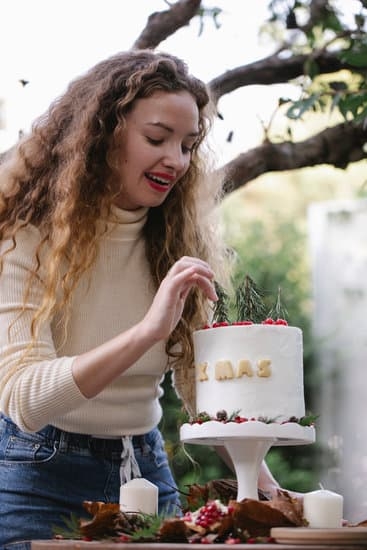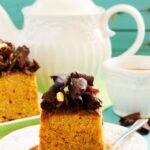Cake decorating is not only about frosting and piping; molds are essential tools that can take your creations to the next level. In this article, we will guide you on how to make molds for cake decorating, unlocking a world of creative possibilities. Whether you want to add intricate designs, shapes, or textures to your cakes, making your own molds allows you to customize and elevate your baked goods in unique ways.
Molds play a crucial role in cake decorating by enabling bakers to replicate complex designs with ease and precision. By learning how to make molds for cake decorating, you can unleash your creativity and bring your imaginative confections to life. From floral patterns to geometric shapes, the possibilities are endless when it comes to designing and creating customized molds that suit your individual style and vision.
By understanding the process of creating molds for cake decorating, you will have the freedom to experiment with different materials and techniques. In the following sections, we will cover the materials needed, tips for choosing the right design, step-by-step instructions on making molds using silicone, as well as useful tips on using and maintaining your molds.
Embark on this exciting journey of mold-making for cake decorating and watch as your edible masterpieces transform into works of art that are sure to impress any palate.
Materials Needed
Silicone
The key ingredient in creating molds for cake decorating is silicone. Silicone is a versatile material that is flexible, durable, and easy to work with. When selecting silicone for making molds, it is essential to choose a food-grade option to ensure it is safe for use with edible materials.
Silicone can be found in liquid form or as a mold putty, both of which have their own benefits. Liquid silicone allows for more precision in creating intricate designs, while mold putty is convenient for quick and simple molds.
Cornstarch
Cornstarch is another essential ingredient when making molds for cake decorating. Cornstarch helps prevent the silicone from sticking to the original object being molded and aids in creating a smooth surface on the finished mold. It is important to dust the object with cornstarch before pouring the silicone to ensure easy removal once the mold has cured. Additionally, cornstarch can also be used to thicken liquid silicone if needed, providing more control over the consistency of the mold-making material.
Clay
Clay plays a crucial role in making molds for cake decorating by providing support and structure during the molding process. Clay can be used to create a base or container for pouring the silicone, ensuring the mold maintains its shape and stability until it cures.
Non-sulfur clay is recommended for making molds as sulfur-containing clay may interfere with the curing process of the silicone. By incorporating clay into your mold-making process, you can achieve more complex shapes and designs that would not be possible with just silicone alone.
By having these essential materials on hand, you can begin creating custom molds for cake decorating projects that will elevate your creations to new levels of artistry and design. Experimenting with different combinations of silicone, cornstarch, and clay will allow you to discover unique techniques and styles that reflect your personal creativity and vision in cake decoration.
Choosing the Right Design
When it comes to making molds for cake decorating, the design you choose plays a significant role in the final outcome of your creations. Selecting the right design can truly enhance your cake decorating projects and elevate them to the next level.
One important tip when choosing a design for your mold is to consider the theme or occasion for which you will be using it. For example, if you are creating a cake for a birthday party, you may want to opt for fun and festive designs such as balloons, flowers, or other celebratory elements.
Another factor to keep in mind when selecting a design for your mold is the complexity of the shape. Intricate designs can add a beautiful and elegant touch to your cakes, but they may also be more challenging to create and work with.
If you are new to making molds for cake decorating, you may want to start with simpler designs before moving on to more complex shapes. Additionally, consider the size of the design in relation to your cakes – some molds may be too large or too small for the size of cake you typically work with.
Experimenting with different designs and shapes can also spark creativity and inspire new ideas for your cake decorating projects. Don’t be afraid to try out unique and unconventional designs – sometimes these can lead to stunning and original creations that stand out from the rest. Remember, making molds for cake decorating is a fun and creative process, so enjoy exploring different design possibilities until you find the perfect mold that will truly enhance your cakes.
| Aspect | Description |
|---|---|
| Design Selection | Consider theme/occasion; complexity; size in relation to cakes |
| Creativity Spark | Experiment with unique & unconventional designs; have fun exploring possibilities |
Making the Mold
Making your own molds for cake decorating can add a personalized touch to your creations and open up a world of creative possibilities. With the right materials and techniques, you can easily craft unique molds that suit your specific design needs. Follow these step-by-step instructions on how to create molds using silicone:
- Prepare Your Workspace: Set up a clean, well-ventilated area where you can work comfortably with the materials without any distractions.
- Gather Your Materials: You’ll need silicone mold putty, a mixing bowl, cornstarch (for dusting), and the object you want to make a mold of (such as a figurine or shape).
- Mix the Silicone: Follow the manufacturer’s instructions to mix the two components of the silicone mold putty together until they are fully combined. Make sure to work quickly as silicone sets fast.
- Pour the Silicone: Once mixed, roll the silicone into a ball and press it onto your object to create an impression. Smooth out any air bubbles or uneven surfaces before letting it cure according to the package directions.
Creating molds for cake decorating allows you to reproduce intricate designs easily and efficiently. By mastering this process, you can tailor-make molds that perfectly complement your cake decorating projects. Experiment with different shapes, sizes, and textures to elevate your creations from ordinary to extraordinary.
Key Takeaway
Making molds using silicone is a straightforward process that requires attention to detail but offers endless creative opportunities for cake decorators. Don’t be afraid to experiment with various designs and techniques to unleash your artistic potential in cake decorating. With practice and patience, you’ll soon become adept at making molds that enhance your culinary masterpieces.
Use and Care
When it comes to using molds for cake decorating, it is essential to understand how to properly utilize them to achieve the best results. Whether you are a beginner or a seasoned baker, following some tips can help you make the most of your molds and ensure their longevity.
Proper Use
To start with, make sure to prepare your mold correctly before pouring in any material. It is crucial to grease the mold lightly with cooking spray or dust it with cornstarch to prevent the cake mixture from sticking. Once your mold is prepared, carefully pour in the cake batter and place it in the oven according to your recipe instructions. Be mindful of overfilling the mold as it can cause spillage and ruin the shape of your cake.
Cleaning and Storage
After using your molds, always clean them thoroughly with warm soapy water and a soft sponge to remove any residue. Avoid using harsh chemicals or abrasive scrubbers as they can damage the mold’s surface. Once cleaned, allow the mold to air dry completely before storing it away. Store your molds in a cool, dry place away from direct sunlight to prevent deformities or discoloration over time.
Longevity Tips
To ensure that your molds last for several uses, handle them with care when unmolding cakes and avoid stretching or twisting them excessively. Additionally, consider investing in high-quality silicone molds that are heat-resistant and non-stick for easy release. Regularly inspect your molds for any signs of wear and tear, such as cracks or tears, and replace them if necessary to maintain consistent results in your cake decorating projects.
By following these tips on properly using your molds for cake decorating and maintaining them for longevity, you can create stunning and professional-looking cakes that will impress every time. Experimenting with different designs and techniques will allow you to unleash your creativity and take your baking skills to new heights.
Advanced Techniques
Creating molds for cake decorating can be an exciting and rewarding process, especially when exploring advanced techniques to develop intricate designs. One popular method is utilizing 3D printing technology to bring custom molds to life. With the ability to create complex shapes and patterns, 3D printing offers endless possibilities for unique cake decorations.
To get started with this technique, you will need access to a 3D printer and design software. There are various online platforms where you can find ready-made designs or create your own from scratch.
Another advanced technique for making molds for cake decorating is crafting custom designs using materials like clay or resin. This method allows for complete creative control over the mold’s shape, size, and details. By sculpting the design by hand or using molds as a base, you can personalize your creations to suit specific themes or preferences.
Once the custom mold is created, it can be used repeatedly to replicate the design on multiple cakes. This technique requires attention to detail and patience but results in truly one-of-a-kind decorations.
Incorporating advanced techniques into your mold-making process can elevate your cake decorating projects to new heights of artistry and precision. Whether you choose 3D printing for complex geometric shapes or custom design for personalized creations, these methods offer innovative ways to enhance your baking skills.
Experimenting with different techniques can inspire creativity and push boundaries in cake decoration, allowing you to showcase unique designs that will impress friends, family, or clients. Dive into the world of advanced mold-making techniques and unleash your imagination in creating stunning edible works of art.
| Technique | Description |
|---|---|
| 3D Printing | This technique uses a 3D printer and design software to create intricate molds with complex shapes. |
| Custom Designs | Allows complete creative control over mold shape and details using materials like clay or resin. |
Troubleshooting
When creating molds for cake decorating, it is not uncommon to encounter some issues along the way. Knowing how to troubleshoot these common problems can save you time and frustration, ensuring that your molds turn out perfectly for your cake decorating projects. Here are some tips on how to address and fix common issues that may arise during the mold-making process:
1. Air Bubbles: One of the most common problems when making molds is the presence of air bubbles, which can result in uneven surfaces or imperfections in your final product. To prevent air bubbles from forming in your mold, try tapping the mold gently on a flat surface after pouring the silicone mixture. You can also use a toothpick or a small pin to carefully pop any visible air bubbles before the silicone sets.
2. Uneven Curing: If you notice that your mold has cured unevenly, with some areas remaining soft while others are firm, this could be due to improper mixing of the silicone base and catalyst. Make sure to mix the components thoroughly according to the manufacturer’s instructions and avoid rushing through this step. Additionally, ensure that the curing temperature and humidity levels are optimal for the silicone to set evenly.
3. Sticky Residue: Sometimes, molds may develop a sticky residue on their surface after curing, making it difficult to remove them from the original object or create clean casts. To prevent this issue, dust your original object with cornstarch or powdered sugar before pouring the silicone mixture over it. This will create a barrier between the object and the mold, allowing for easy release once the mold has cured.
By addressing these common issues and following proper techniques for making molds for cake decorating, you can ensure that your creations turn out beautifully every time. Experimenting with different designs and advanced techniques will allow you to expand your skills and create unique molds for all your cake decorating projects. With patience and practice, you’ll soon be able to make intricate molds that enhance the beauty of your cakes with ease.
Inspiration
Creating your own molds for cake decorating opens up a world of possibilities for adding unique and personalized touches to your baked creations. Whether you are a seasoned baker or just starting out, homemade molds can take your cake decorating skills to the next level. In this section, we will showcase some creative cake decorating projects that have been enhanced by the use of homemade molds, inspiring you to unleash your creativity in the kitchen.
One popular way to use homemade molds in cake decorating is to create intricate fondant designs. By making custom molds using silicone or other materials, you can add detailed patterns and textures to fondant accents for cakes.
From delicate lace patterns to fun shapes like animals or objects, the options are endless when it comes to designing your own molds. With a little practice and experimentation, you can elevate the look of your cakes with professional-looking decorations made from your own homemade molds.
Another exciting technique for using homemade molds in cake decorating is creating edible embellishments with chocolate or candy melts. By making custom silicone molds in various shapes and sizes, you can craft unique chocolate decorations to adorn your cakes and cupcakes.
Whether you want to add floral designs, geometric shapes, or even miniature figures, making molds for chocolate decorations offers a fun and delicious way to enhance your baked goods. With the right tools and materials, you can easily master the art of molding chocolate for stunning cake embellishments that are sure to impress your guests.
In addition to fondant and chocolate decorations, homemade molds can also be used to create intricate sugar paste designs for cakes. By customizing silicone molds with intricate patterns or sculpted details, you can make beautiful sugar paste accents that will add elegance and sophistication to your desserts.
From elegant borders and filigree medallions to realistic flower blossoms and leaves, the possibilities for creating stunning sugar paste decorations with homemade molds are truly endless. Experimenting with different techniques and designs will allow you to develop your skills in cake decorating and unleash your artistic vision in every sweet creation.
Conclusion
In conclusion, learning how to make molds for cake decorating can truly elevate your confectionery creations to new heights. By understanding the importance of molds and the creative possibilities they offer, you open yourself up to a world of limitless design opportunities in your cake decorating projects. Through the step-by-step process outlined in this article, from choosing the right design to properly using and maintaining your molds, you can confidently embark on this DIY journey with confidence.
By utilizing materials such as silicone, cornstarch, and clay, you have the power to bring your imaginative cake designs to life in a tangible form. The advanced techniques mentioned, such as 3D printing or custom designs, provide even more avenues for experimentation and innovation in mold making. Troubleshooting tips will equip you with the necessary skills to overcome any challenges that may arise along the way.
As you embark on your mold-making adventure, remember that practice makes perfect. Do not be afraid to get creative and push your boundaries when it comes to designing molds for cake decorating. Let your imagination run wild and be inspired by the showcase of creative cake decorating projects using homemade molds. So go ahead and start experimenting with making molds – who knows what delicious masterpieces you can create.
Frequently Asked Questions
What Do You Use to Make Molds for Cakes?
Silicone molds are commonly used to make cakes as they are flexible, non-stick, and easy to demold. These molds can be bought pre-made or made from scratch using silicone putty or liquid silicone rubber.
How Do I Make My Own Molds?
Making your own molds can be a fun and creative process. One way to make your own mold is by using silicone putty that can be shaped around the object you want to replicate. Another method is using liquid silicone rubber poured over the object and allowed to cure.
How Do You Make Food Grade Silicone Molds at Home?
Creating food-grade silicone molds at home requires careful attention to safety and cleanliness. It is important to use only food-grade silicone materials that are safe for contact with food.
This can include silicones specifically labeled as food-safe or platinum-cured silicones for higher quality results. Following proper mixing ratios and curing times is essential to ensure the mold is safe for use with edible items.

Welcome to our cake decorating blog! My name is Destiny Flores, and I am the proud owner of a cake decorating business named Cake Karma. Our mission is to provide delicious, beautiful cakes for all occasions. We specialize in creating custom cakes that are tailored specifically to each customer’s individual needs and tastes.





